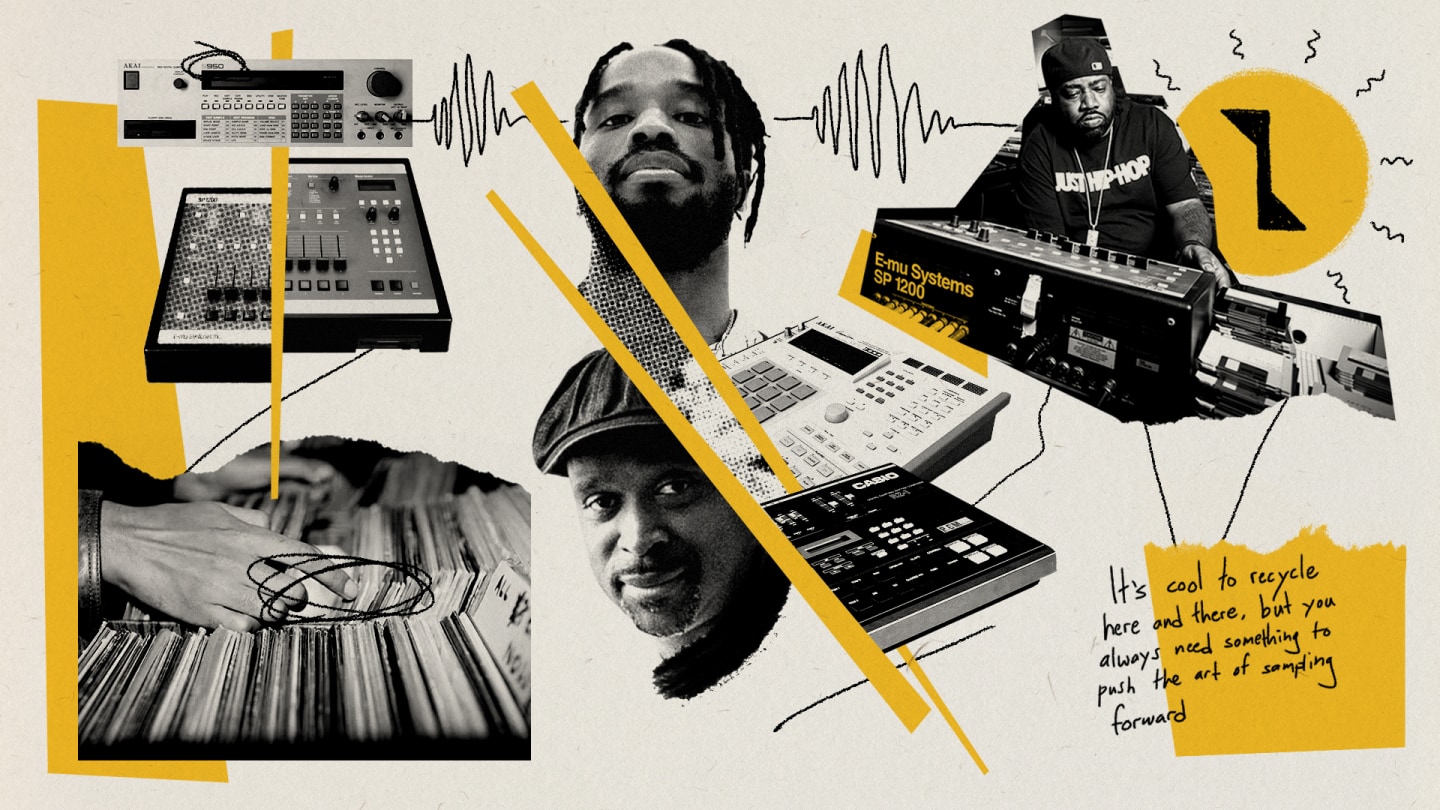
From the earliest iterations of the genre, sampling has served as hip-hop’s musical backbone; with jazz, funk, soul, reggae and more forming its sonic foundations in more ways than one. As technologies change, so do the methods, unwritten rules, and limitations of art. From equipment like the SP1200 to digital tools like Serato, production and sampling have undergone their own evolution.
Serato’s most recent cross-platform plugin, Sample 2.0 and its Stems feature, allows producers to isolate individual track elements in real-time through stem-separation technology (stems); making it easy to select, chop, pitch, layer, and sync samples, making for increasingly creative beats and remixes that balance the genre’s audio past, present and future. “There are producers out here doing some incredibly mind-explosive things with technology like Stems,” producer DJ Spinna explained. “Breaking down vocals, basslines, and musical elements that we didn't have access to before. People like Kaytranada, Tall Black Guy, Stro Elliot, SNDTRAK, and Vitamin D have revolutionized the game.”
For producers like Lord Finesse, prominent member of legendary rap collective D.I.T.C., the hindrances of earlier sampling tools pushed producers to think outside the box. “The SP1200 was easy to use, the learning curve was minimal and it had a funk swing like no other machine at the time,” he explained, detailing its bit rate and sampling time limitations. “But that’s what made the producers from that era so incredible. You were forced to use your mind to be able to create around the limitations.”
An industry standard for decades, the SP1200’s limitations included a sampling time of only 10 seconds. “What I learned early on from a few producers was to sample the audio source at double speed in order to get as much of it into the machine in one shot,” Spinna explained, adding that the first machine he learned how to sample on, the Casio SK-1, had even less sampling time at 1.7 seconds. “Also, the lower you tune down drums, the lower the bitrate drops which creates a dirtier, harder quality that screams Hip Hop.”
Going on to use other machines like the Casio RZ-1, Akai S950, and the MPC3000, producers like Spinna made the impossible happen; using creativity to skirt around technological shortcomings to craft hits. “On one hand, it's kind of cool that we made some miraculous beats with limited tools,” Spinna said. “But if we had Stems back then… the possibilities would have been endless.”
Counting rare soundtracks and film scores alongside soul, jazz and gospel among his favorite places to pull samples from, Finesse’s production ethos focused on using samples before anyone else; something that has become increasingly more difficult as samples are seeing second and third lives across genres.“That’s what D.I.T.C. was about: always looking for rare, obscure and out of print albums and using not only just loops, but also sounds, horns, bass lines that could be chopped, flipped, and transformed into creating new & fresh compositions,” he explained. “Everything is being heavily recycled with nothing new and refreshing to be amazed by. It’s cool to recycle here and there, but you always need something to push the art of sampling forward.”
While the 2000s offered producers the tools and software to sample using only a digital setup, producers like DJ Dahi had their own unique learning curve. “That was the first time I started to make beats and started to use the software to sample music and it was cool because it was a visual representation of the sounds,” he explained. “I think with Stems now, you can just really use parts of records that you always love but may have not been able to use before because of something blocking it from a vocal or a drum sound.”
Like most industries, AI is at the forefront of major innovative shifts in sampling’s next iteration; empowering creatives to explore uncharted artistic waters. For producers, a tool like Stems offers new-found abilities, like instantly isolating and working with individual acapella, melody, bassline, and drum stems or adding sounds and samples with one click, thanks to Serato’s machine-learning algorithm. With these new technologies, creatives are able to push boundaries in ways they may have been unable to before, pairing skill with innovation. “Music is a sum of parts and I think Stems is just kind of re-imagining what you can do with songs,” Dahi explained. “When you’re outside and you hear birds chirping or people talking and to just be able to take your phone, record that, and make an instrument out of it is just kind of mind- boggling.”
As these tools continue to evolve, so will sampling’s methods and ultimately its sound. By mapping the art’s past and present, its future is easier to predict. “There were definitely things I wished I could do during that time I couldn’t, but with today’s technology it allows me to do so but with the technical thinking and skills from my era,” Finesse said. “A savvy, creative mindset surrounded by limitless technology.”
With Serato leading the charge in combining AI with important skills and lessons from music’s past, innovative machine-learning tools are poised to be an integral part of sampling’s future: a world of infinite possibilities.